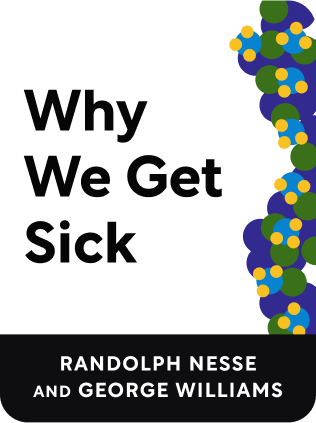

This article is an excerpt from the Shortform book guide to "Why We Get Sick" by Randolph Nesse and George Williams. Shortform has the world's best summaries and analyses of books you should be reading.
Like this article? Sign up for a free trial here .
Why do humans share one input for both breathing and eating? Why do we still have an appendix? And why are our retinas inside out?
The answer to all these questions is simple: bad evolutionary designs. Over time, evolution makes slow changes to our bodies, but it does not erase the old designs, leaving us with bad or useless traits.
Keep reading to learn more about human evolutionary legacies.
Legacies of Evolutionary History
Evolution makes incremental changes to what came before. It does not totally scrap a current design and start from scratch. This can lead to some evolutionary designs that cause problems today, and that we might redesign should we have the choice.
For example, in all vertebrates, the esophagus (leading to the stomach) and the trachea (leading to the lungs) have the same input (the mouth). This can lead to choking. This arrangement came from an early wormlike ancestor that used the same tube for both respiration and digestion. All vertebrates descended from this ancestor and inherited this design.
In contrast, insects and mollusks have complete separation of the breathing and eating structures. They evolved on a different lineage and aren’t beholden to this evolutionary artifact.
Bad Evolutionary Designs
Here are more examples of evolutionary legacies:
- In our eyes, the retina is inside-out—it’s covered by a layer of blood vessels and nerves. Light entering the eye has to pass through this layer before hitting the layer of rods and cones. This is an artifact of how blood vessels and nerves were arranged in transparent animals—since they were transparent, it didn’t really matter where how the two layers were arranged.
- The nerves cause a blind spot. To overcome the blind spot, our eyes need to perform tiny twitches constantly to form a complete picture.
- The inverted eye arrangement promotes a detached retina. In contrast, squids have eyes where the retina is anchored from below by nerve fibers, and detachment is much more difficult.
- The appendix was previously used for digestion as a caecum, used to digest plant foods of low nutritional value. Today, the appendix has little function except to cause appendicitis.
- Interestingly, if the appendix gets too small, it is more prone to bursting, since swelling is more likely to burst a long thin appendix than a large one. Thus, there is a natural selection against reducing appendix size.
- The lesson: some vestigial traits might persist because further diminishing them increases vulnerability to disease.
- Humans have relatively larger heads than our primate relatives to provide for higher intelligence. However, this complicates childbirth, since the size of the female pelvis limits the size of the skull that can pass through it. Were it not for evolution, we might otherwise design the uterus to be below the pelvis to avoid these problems.
- Becoming bipedal gave humans a host of issues:
- We get lower back pain from compressive forces.
- Our knees, ankles, and feet are subject to different forces than quadrupeds and are vulnerable to injury.
- Our abdominal viscera is designed to hang from the upper wall of the abdominal cavity. This works fine for animals on four legs, but in bipedal humans, this causes problems such as digestive system blockages and hemorrhoids.
- We have two kidneys and one heart, like all vertebrates do, because of evolutionary history.
- If the heart muscle is too weak to pump fully, congestion of excess fluid happens. In these times, we’d wish for the body to excrete excess fluid. However, historically, low blood pressure was likely caused by bleeding or dehydration, during which retention of fluids was useful.

———End of Preview———
Like what you just read? Read the rest of the world's best book summary and analysis of Randolph Nesse and George Williams's "Why We Get Sick" at Shortform .
Here's what you'll find in our full Why We Get Sick summary :
- Why evolution hasn't rid humans of all diseases
- How reproductive fitness is more important than overall survival
- How you evolved to dislike the sound of a baby crying






